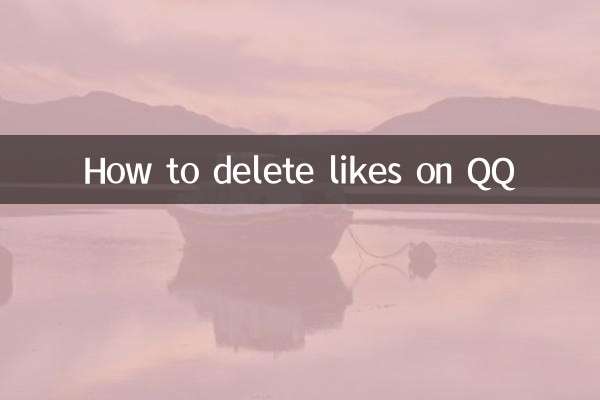How to delete other items in storage
When we use our phones or computers every day, we often find that a category called "Others" takes up a lot of space in the storage space. What exactly is this “other”? How to clean it? This article will give you a detailed answer to this question based on the hot topics and user concerns in the past 10 days.
1. What is “other” storage?

"Other" storage usually refers to files that cannot be clearly classified by the system, including cache, temporary files, logs, application residual data, etc. Although these files are not directly visible, they take up a lot of space and affect device performance.
The following is the popular discussion data about "other" storage in the past 10 days:
| platform | Related topic popularity | main focus |
|---|---|---|
| 120 million reads | How to clean up “other” storage on your phone | |
| Zhihu | 5800+ answers | Computer "other" file classification analysis |
| Douyin | 32 million views | One-click cleaning tool review |
2. How to clean up “other” storage?
The cleaning methods of different equipment are slightly different. The following are the specific steps:
| Device type | Cleaning method | Things to note |
|---|---|---|
| Android phone | 1. Settings→Storage→Cleanup Acceleration 2. Manually delete app cache | Avoid accidentally deleting important data |
| iPhone | 1. Settings→General→iPhone Storage 2. Uninstall unused apps | Some system files cannot be deleted |
| Windows computer | 1. Disk Cleanup Tool 2. Delete temporary files (%temp%) | Requires administrator rights |
| Mac computer | 1. About this machine→Storage Management 2. Use tools like CleanMyMac | Be wary of third-party software security |
3. Tips to prevent “other” storage from becoming too large
According to the recent actual test recommendations of technology bloggers, the following methods can effectively control the growth of "other" storage:
1.Clean app cache regularly: Especially for high-frequency applications such as WeChat and Douyin, cleaning them once a week can reduce "other" storage by more than 30%.
2.Use professional cleaning tools: Such as CCleaner, SD Maid, etc., but be careful to choose the official version.
3.Limit background data generation: Turn off unnecessary logging and diagnostic data uploading in settings.
4.System update management: The latest updates of iOS 16.5 and Android 13 have optimized the storage classification mechanism. It is recommended to keep the system up to date.
4. User FAQs
Based on recent discussions in major forums, we have compiled the following frequently asked questions:
| question | solution |
|---|---|
| “Others” increased rapidly after cleaning | It may be that an application is abnormal. You need to check the recently installed software. |
| "Other" is displayed but the corresponding file cannot be found | Scan for hidden files using professional tools like DiskDigger |
| "Other" files caused by cloud sync | Check the local cache settings of services such as iCloud/Google Drive |
5. Expert advice and future trends
Digital technology expert @techxiaoxin mentioned in a recent live broadcast: "With the advancement of storage technology, it is expected that the new system launched in the fourth quarter of 2023 will introduce a more intelligent storage classification algorithm, and the proportion of 'other' categories is expected to be reduced by more than 50%." At the same time, he advised users:
1. Perform complete storage maintenance once a month
2. Back up important data regularly and then clean it up
3. Pay attention to the emerging "system data" classification
Through the above methods, you can effectively manage and clean up "other" storage in the device, free up valuable space, and improve device operating efficiency. Remember to back up important data before operation to avoid accidentally deleting key files.

check the details

check the details